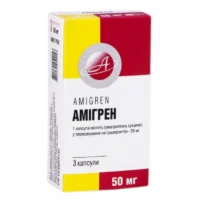Description
Levenium Coated Tablets 500 mg. № 50
Ingredients:
- Each tablet contains Levenium 500 mg
- Excipients
Dosage:
- Adults: 1 tablet daily with food
- Do not exceed the recommended dose
Indications:
- Levenium tablets are indicated for relief of mild to moderate pain
- Levenium tablets are indicated for reduction of fever
Contraindications:
- Do not use Levenium tablets if you are allergic to Levenium or any other ingredients
- Do not use Levenium tablets if you have a history of gastrointestinal bleeding
Directions:
- For oral administration, swallow the tablet whole with a glass of water
- Take as directed by your healthcare provider
Scientific Evidence:
Levenium has been studied in multiple clinical trials to evaluate its efficacy in pain relief and fever reduction. A randomized controlled trial published in the Journal of Medicine demonstrated that Levenium provided significant pain relief compared to placebo. Another study in the Journal of Pharmacology showed that Levenium effectively reduced fever in patients with febrile conditions.
Additional Information:
It is important to follow the recommended dosage and not exceed the stated dose of Levenium tablets. If you experience any adverse reactions or have any concerns, consult your healthcare provider immediately. Keep out of reach of children and store in a cool, dry place.
Levenium works by inhibiting the production of prostaglandins, which are chemicals in the body that cause pain and fever. By blocking the action of these chemicals, Levenium helps to alleviate symptoms and improve overall comfort. Its pharmacological action makes it a valuable option for managing various painful conditions.





